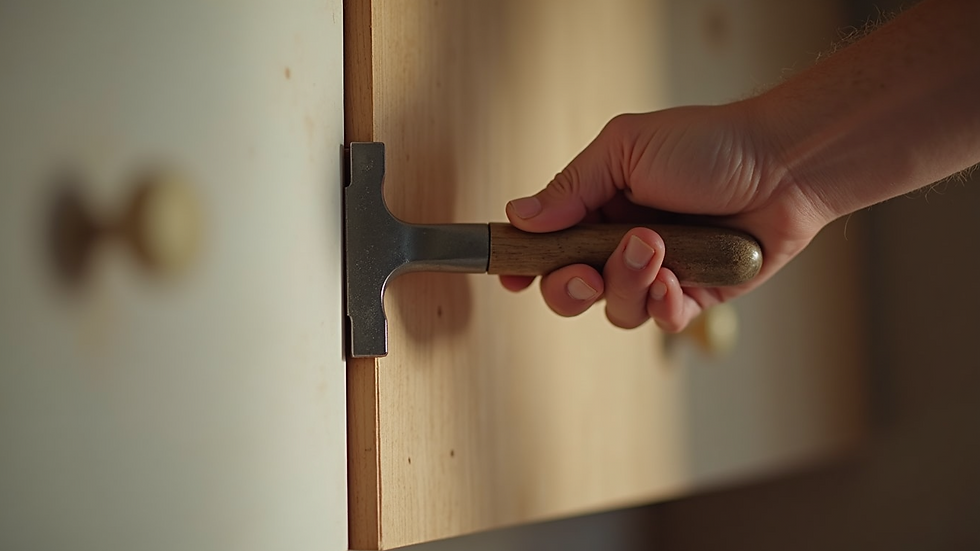Essential Tips for Kitchen Demolition
- Thiago Gomes
- 4 days ago
- 3 min read
Starting a kitchen renovation can be exciting. But before you get to the fun part of designing and installing new fixtures, you need to handle the demolition carefully. Removing old cabinets, appliances, and surfaces requires planning and safety. I want to share some essential tips for safe kitchen demolition techniques that will help you avoid common pitfalls and keep the process smooth.
Preparing for Safe Kitchen Demolition Techniques
Preparation is the key to a successful and safe kitchen demolition. Before you start tearing down walls or pulling out cabinets, take these steps:
Turn off utilities: Shut off water, gas, and electricity to the kitchen. This prevents accidents like leaks, shocks, or fires.
Clear the area: Remove all items from cabinets, countertops, and floors. This gives you space to work and protects your belongings.
Wear protective gear: Use gloves, safety glasses, dust masks, and sturdy shoes. Demolition creates dust and debris that can harm you.
Plan waste disposal: Have bins or bags ready for rubbish. Consider recycling materials like metal or wood to reduce landfill waste.
Taking these precautions helps you work safely and efficiently. It also protects your home from damage during the demolition.

Tools and Techniques for Safe Kitchen Demolition
Using the right tools and techniques makes demolition easier and safer. Here are some essentials:
Hand tools: Crowbars, hammers, and screwdrivers are great for removing cabinets and fixtures carefully.
Power tools: Reciprocating saws and drills speed up the process but require caution. Always follow safety instructions.
Work in sections: Remove one part at a time, such as cabinets first, then countertops, then appliances.
Avoid damaging walls and floors: Use gentle prying and cutting to preserve surfaces you want to keep.
Watch for hidden hazards: Be alert for electrical wires, plumbing pipes, or gas lines behind walls.
By working methodically and using the right tools, you reduce the risk of injury and costly repairs.

How much does it cost to gut out a kitchen?
Knowing the cost of gutting a kitchen helps you budget properly. The price depends on several factors:
Size of the kitchen: Larger kitchens require more time and labour.
Materials to remove: Cabinets, tiles, appliances, and plumbing all add to the cost.
Disposal fees: Removing waste and recycling materials can incur charges.
Labour costs: Hiring professionals will cost more but ensures safety and efficiency.
On average, gutting a kitchen in Sydney can range from $2,000 to $6,000. Doing it yourself saves money but requires time and care. If you want a hassle-free experience, consider hiring experts who specialise in kitchen demolition. They handle everything safely and dispose of waste responsibly.
Managing Waste and Recycling During Demolition
One important part of kitchen demolition is dealing with waste. Proper disposal protects the environment and keeps your site clean. Here’s how to manage it well:
Sort materials: Separate wood, metal, plastic, and hazardous waste.
Recycle what you can: Many materials like metal pipes and cabinetry parts can be recycled.
Use licensed waste facilities: Avoid illegal dumping by using approved centres.
Minimise landfill waste: Plan demolition to reduce unnecessary waste.
Memates Demolition is known for their environmentally friendly approach. They focus on sustainable recycling efforts to reduce landfill waste. Following their example helps protect Sydney’s environment while renovating your kitchen.
Tips for Staying Safe Throughout the Demolition
Safety should be your top priority during every step of the demolition. Here are some final tips to keep in mind:
Work slowly and carefully: Rushing leads to mistakes and injuries.
Keep children and pets away: Demolition sites are dangerous.
Check for asbestos: Older homes may have asbestos in walls or tiles. Get a professional inspection if unsure.
Stay hydrated and take breaks: Demolition is hard work. Rest to avoid fatigue.
Have a first aid kit nearby: Be ready for minor cuts or scrapes.
By following these tips, you protect yourself and others while making progress on your kitchen project.
Moving Forward with Confidence
Demolishing a kitchen is a big job, but with the right preparation and care, it can go smoothly. Remember to plan ahead, use safe techniques, manage waste responsibly, and prioritise safety at all times. If you want peace of mind, consider hiring professionals who specialise in kitchen demolition. They bring expertise, safety, and environmental care to your project.
Taking these steps will set you up for a successful renovation. Soon, you’ll be ready to enjoy your brand-new kitchen space. Happy renovating!
.png)



Comments